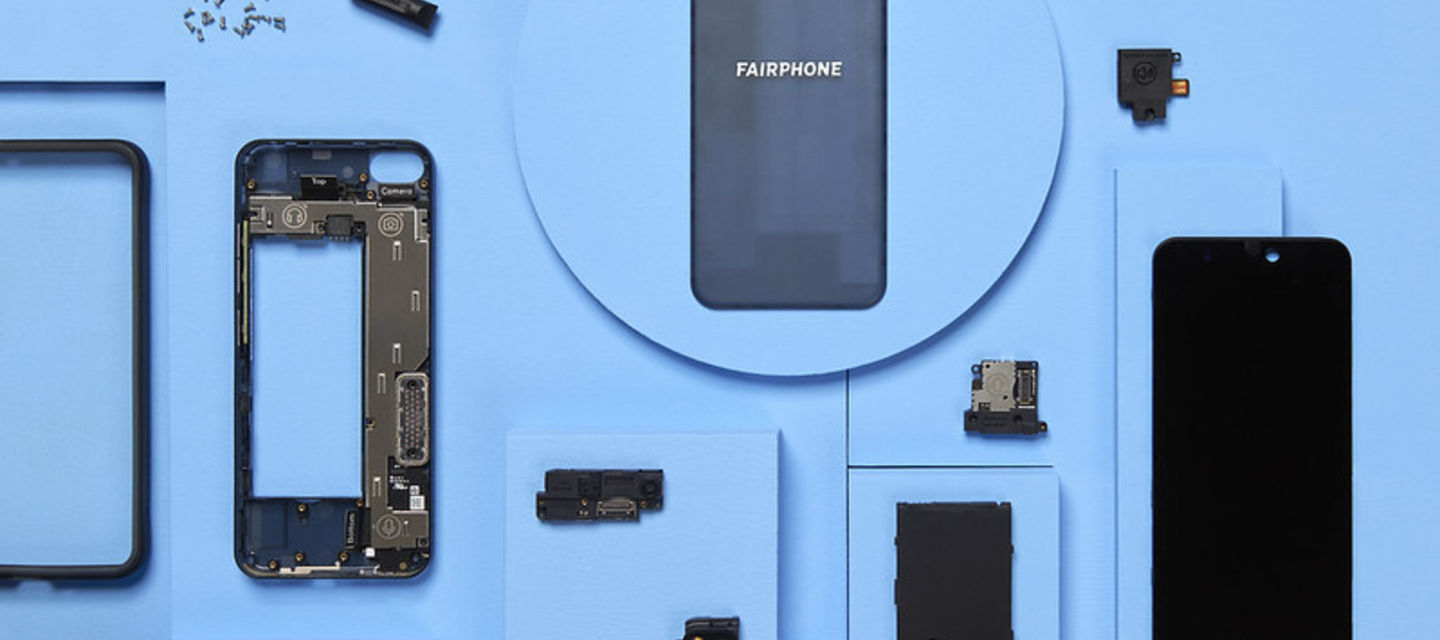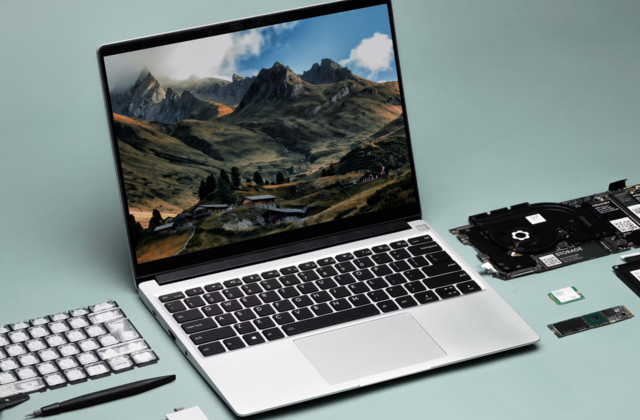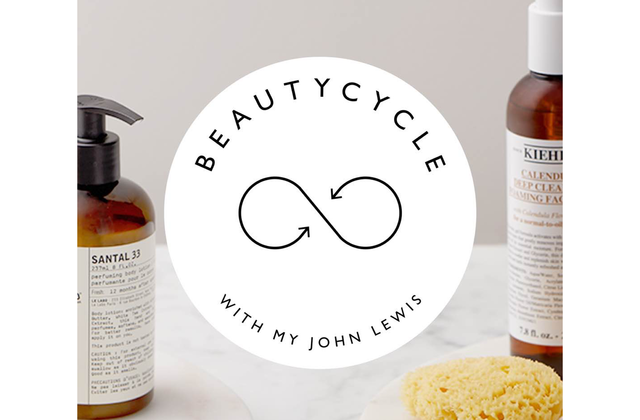What is it? Stemming from a campaign to raise awareness on conflict minerals, and low working standards in electronics supply chains, Fairphone became a social enterprise in 2013 and since has launched 3(+) new phone models (Fairphone 3+ launched in 2020 is an extension of the existing Fairphone 3). Based on the idea that “the most sustainable phone is the one you already own” (Fairphone, 2020c), Fairphone has created modular, customizable phones for long-time use that can easily be repaired by the user, with support from the Fairphone repair guide, community and spare parts directory. The company also provides open-source software, encourages reuse and end-of-life recycling and has trialed as phone-as-a-service offer for businesses in 2018.
Why is this important? Cell phones have become the largest electronic market in the last two decades (Haucke, 2018) with around 1.4 billion new phones sold every year (Fairphone, 2020a). Those phones are oftentimes replaced before their technical obsolescence, with the average lifespan of a smartphone declining to approximately 12 months (Haucke, 2018). Those phones that are considered obsolete are discarded by their users, with an estimated 1.6 billion unused phones in drawers and cabinets around the world (Fairphone, 2017) and only around a third of discarded electronics actually reused or recycled (Fairphone, 2017).
Main resource strategy: Slowing the loop through long product lifetime strategies, including modularity, repair, reuse and product-as-a-service.
Other resource strategies: Closing the loop through its phone take-back and recycling scheme that accepts not only Fairphones but also other redundant devices.
Business model aspects:
- Value Proposition: Fairphone offers an alternative smartphone with do-it-yourself repairs, customization options, software updates and long-term availability of spare parts. The aim is to support phone longevity, thereby decreasing the device’s environmental footprint.
- Value Creation & Delivery: Fairphone has created over 3 new smartphone models, with the most recent Fairphone 3+ designed as an upgrade of Fairphone 3 to ensure the last model does not become obsolete (Fairphone, 2020a). The new generation of Fairphones consists of 7 modules which can be repaired and replaced by the user with the help of the online repair toolkit, the spare parts directory and the Fairphone community.
- Value Capture: Fairphone 3 retails at €419 while Fairphone 3+ can be bought for €469. Spare parts and accessories are also available to buy from Fairphone, with the costs of repair considerably cheaper than repairs for non-modular phones (Circle Economy, 2017). Fairphone also takes back old phones, offering a cash back for Fairphone 1 and 2 when the customer orders a Fairphone 3 or 3+.
Strategies for degrowth/ sufficiency (based on sufficiency strategies from Niessen & Bocken, 2021):
- Awareness-raising & Exchange platform: Fairphone promotes the positive impact of not buying a new phone and connects its users through a knowledge exchange forum to enable collaboration and better repair.
- Design & Green alternative: The main strategy employed by Fairphone is product longevity. As stated in their 2017 Impact Report: “We don’t want people to buy new phones. We want them to keep using the phones they have (Fairphone or not) for as long as possible” (p. 25). The company wants to discourage customers from buying new phones by making the Fairphone repairable, modular and customizable.
- Lifetime extension services: Fairphone offers a repair service to its customers.
- Support for repair and reuse: They provide regular software updates and keep spare parts of the hardware while also offering easy DIY repair instructions. Research by Haucke (2018) in sustainability motivations of Fairphone users shows that “[t]he Fairphone was often mentioned as a way to increase sustainability and as a solution against unsustainable (mobile phone) consumption” (p. 1726).
Business model experimentation practices: Fairphone has been experimenting with the product-as-a-service business model in 2017 and 2018. Following a community of practice research with Circle Economy and other experts, Fairphone decided to trial Fairphone-as-a-service for businesses with Dutch PGGM, a pension fund asset manager, in 2018 (Fairphone, 2017). The aim was to provide the cellphone but also ensure the resources are returned to Fairphone after use, for reuse or recycling. Fairphone-as-a-Service included the provision of devices, maintenance and update services and a guaranteed end-of-use take-back for an estimated fee of €25 per device per month (Circle Economy, 2017).
Tools, methods and approaches used: Fairphone has used Life Cycle Analysis to assess the impact of its products, including the Fairphone 3 (Proske et al., 2020).
Sustainability outcomes: The 2020 Life Cycle Analysis of the Fairphone 3 suggests that CO2 emissions can be by up to 95% in some modules through swapping parts and reusing refurbished modules in as repair parts (Fairphone, 2020b).
Sources:
Circle Economy (2017). The Circular Phone – Legal, operational and financial solutions to unlock the potential of the ‘Fairphone-as-a-Service’ model. Accessed 30 November 2020 at: https://www.circle-economy.com/resources/the-circular-phone
Fairphone (2017). Impact Report Vol. 1 – We’re here and we’re here to stay. Accessed 30 November 2020 at: https://www.fairphone.com/wp-content/uploads/2018/11/Fairphone_Report_DEF_WEB.pdf
Fairphone (2020a). A new milestone in fairer electronics: Introducing Fairphone 3+. Accessed 27 November 2020 at: https://www.fairphone.com/it/2020/08/27/introducing-fairphone-3-plus/
Fairphone (2020b). How sustainable is the Fairphone 3?. Accessed 15 December 2020 at: https://www.fairphone.com/en/2020/07/31/how-sustainable-is-the-fairphone-3/
Fairphone (2020c). Spare parts. Accessed 25 September 2020 at: https://shop.fairphone.com/en/spare-parts/?ref=footer
Proske, M., Sánchez, D., Clemm, C. & Baur, S. (2020). Life Cycle Assessment of the Fairphone 3. Fraunhofer-Institut für Zuverlässigkeut und Mikrointegration IZM. Accessed 15 December 2020 at: https://www.fairphone.com/wp-content/uploads/2020/07/Fairphone_3_LCA.pdf
***
About project Circular X
Project Circular X is about ‘Experimentation with Circular Service Business Models’. It is an ambitious research project funded by the European Research Council (ERC) which supports top researchers from anywhere in the world. Project CIRCULAR X runs from 2020-2025. The project is led by Principal Investigator (PI) Prof Dr Nancy Bocken, who is joined by a multidisciplinary team of researchers at Maastricht Sustainability Institute (MSI), Maastricht School of Business and Economics, Maastricht University. The project cooperates with businesses who want to innovate towards the circular economy.
Project Circular X addresses a new and urgent issue: experimentation with circular service business models (CSBMs). Examples of such new business models include companies shifting from selling products to selling services and introducing lifelong warrantees to extend product lifetimes. However, CSBMs are far from mainstream and research focused on experimentation is little understood. The research aims to conduct interdisciplinary research with 4 objectives:
- Advancing understanding of CSBMs; their emergence and impacts
- Advancing knowledge on CSBM experimentation
- Developing CSBM experimentation tools
- Designing and deploying CSBM experimentation labs
Funding source
This project has received funding from the European Research Council (ERC) under the European Union’s Horizon 2020 research and innovation programme, grant agreement No. 850159.
Using this information
When you cite this publication, please use the following source:
Circular X. (2020) Case study: Fairphone - Modular, long-life smartphones. Accessed from www.circularx.eu



